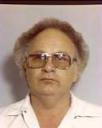 Excerpted from CULLOTTA – The Life of a Chicago Criminal, Las Vegas Mobster and Government Witness.
Excerpted from CULLOTTA – The Life of a Chicago Criminal, Las Vegas Mobster and Government Witness.
Every so often Frank went back to Chicago to deliver the money Tony was sending the bosses. On one trip after finding out about Lefty’s wife, he made a delivery to Joe Ferriola, one of the big shots. Ferriola had a question for him. “Frankie, you’ve gotta level with me. Is the little guy fucking the Jew’s wife?”
“No way. I know Tony and Lefty ain’t gettin’ along, but as far as I know Tony’s not fucking Lefty’s old lady,” Frank said quickly and with a straight face.
“‘I believe you, Frankie. You know we’ve got a lot of money riding out there and we can’t have some cunt fucking everything up just because some guy gets a hard-on. If that happens a lot of people will be mad, including me.”
“You’ve got nothing to worry about,” Frank assured him. “Tony’s not doin’ anything wrong.”
That night Frank was in a restaurant with Larry Neumann, who was in Chicago on other business, and Wayne Matecki. Outfit underboss Jackie Cerone happened to be in the same place. He came over to their table to talk. “How’s Tony doing out there?” he asked.
“He’s doing a good job; everything’s fine,” Frank answered.
“I’m glad to hear that. Give him a message from me. Tell him not to fuck up and to keep his nose clean,” Cerone said, then walked away.
Larry Neumann wasn’t impressed with Cerone or his message to Tony. “That bastard,” he fumed. “Do you realize how easy it would be to take him out? We could take out this whole fucking joint.”
“Take it easy, Larry. That’s not going to happen,” Frank said. He made it a point to never talk down to the volatile Neumann. Each recognized the other man’s capacity for violence, and they treated one another with respect.
When Frank got back to Vegas he told Tony what Ferriola asked him. Concerned, Tony asked, “What did you tell him?”
Frank teased his friend. “I told him you’ve been banging the broad.” Both men laughed.
Then Frank turned serious. After delivering Cerone’s message he said, “I’ll tell you something. If those guys in Chicago ever find out I lied to them, they’ll dig two graves in the desert, one for you and one for me.”

